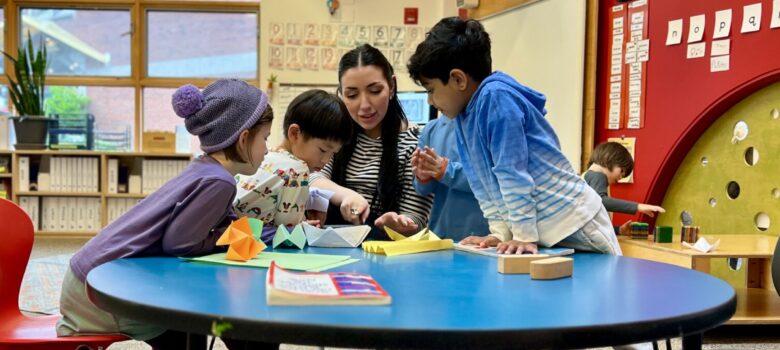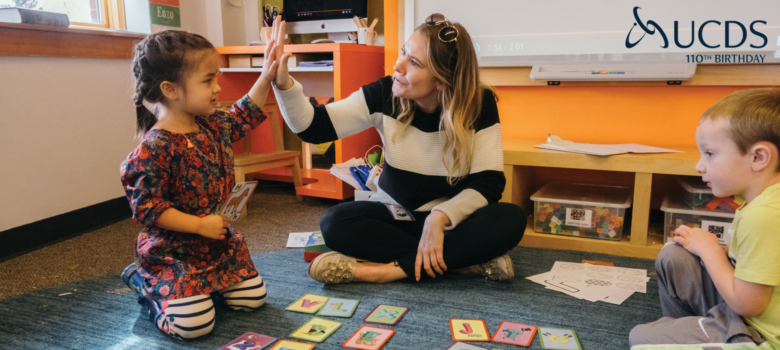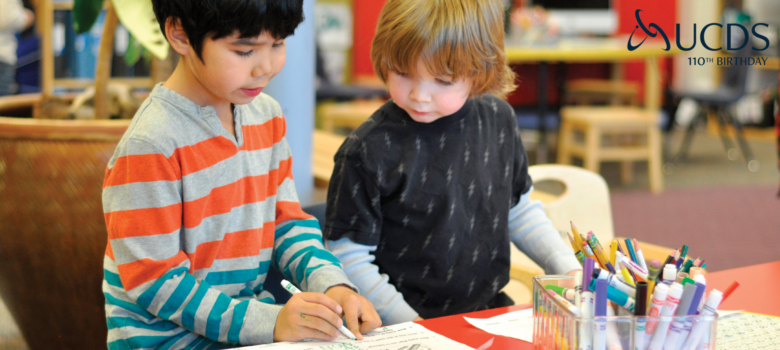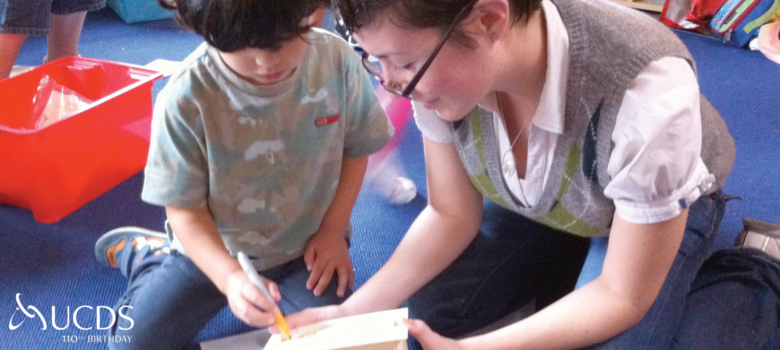Imagine the world without Legos. I can’t. 🙂 Here’s Studio Curriculum Coordinator Marianne Sardelich with thoughts on their application with Toddlers and Pre-schoolers. -Ed.
__________
On the front of Legos boxes, you will find a warning label that reads: Warning Choking Hazard. Small Parts. Not for children under three years. For my first three years at The Studio, I heeded this warning. It made sense. The parts are small and they could easily be put into a mouth and swallowed. Then a class of dedicated builders entered our Toddler/ Preschool classroom and my co-teachers and I had to new find ways to engage them. During the course of the year, they moved through building with the large wooden blocks, the small wooden blocks, hollow blocks, painted blocks, large cardboard boxes, Mega Blocks, and Duplo Blocks. As the end of the year approached, the children expressed more and more interest in building more complex things. The main item that they wanted to build was cars and none of our block options had wheels.
My co-teachers and I discussed the possibility of introducing Legos into the classroom. It was close to the end of the year, so many of the children had already turned three. We thought that the children had the fine motor skills needed to take the Legos apart and put the Legos together. We also wanted to be cautious, though. We decided to offer it as a table activity, with a small number of children at the table at a time, and with a teacher closely supervising them.
Introducing the children to Legos was close to magical. Almost immediately, it was clear that this was the type of building that was missing in our classroom. The group of builders, of course, were drawn to building with the Legos, but the Legos also attracted children who hadn’t been interested in building before. Much to our surprise and delight, children putting Legos in their mouths turned out to be a non-issue.
In the time since Legos were first introduced in the Toddler/ Preschool classroom, they have become a fixture of our school year. Around April or May, when the children have spent months learning how the other blocks in the classroom work and are ready to try something new and challenging, the teachers bring out the box of Legos. We find that Legos help children build skills in collaboration, communication, and problem-solving. Taking apart Legos and putting them together is challenging for most of the children, but the three year olds have a slightly easier time. The younger children will go to their older friends for help with their Legos. Children will sit around the box of Legos pulling out pieces and handing them to friends who need them. Sometimes the Lego table is silent because everyone is so caught up in their individual building. Other times, the table is abuzz with conversation about what is being built, what it will be used for, or how it is being put together. Frequently, children work together to build cars, houses, rocket ships, and castles. There are occasionally conflicts, like when two people want to use the same block, but these are quickly resolved by a look through the box or the help of a friend or teacher. The children love building with the Legos and they are very motivated to quickly solve any problems that arise.
We are now in the Lego portion of our Studio year. Legos are as popular as they were four years ago when we brought out that first box. It is still a table activity and there is still always a teacher at the table, but now the teacher is there to support Lego building and not worried about someone swallowing a Lego. A few days ago, I was watching the Lego table, thinking about how skilled the children were at taking the pieces apart and putting them together, watching them discuss building options, and helping one another. One of the students from our Infant/ Toddler classroom came over to the table. He was visiting the classroom and exploring what options were available. He picked up a Lego, looked at it and then at the table, put it down and walked away. He had assessed that he wasn’t quite ready for Legos yet. I felt proud that years ago we honored the skills and needs of our students rather than a warning on a box.







